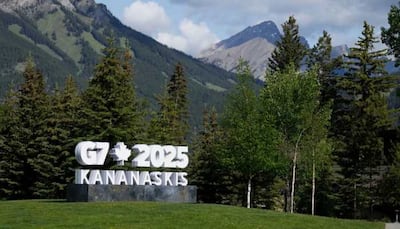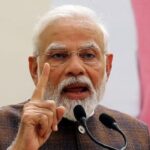New Delhi: Prime Minister Narendra Modi is attending the G7 Summit, which is being held at Kananaskis in Canada’s Alberta. This tour is his first visit to the country since tensions flared between New Delhi and Ottawa over the killing of Khalistani separatist Hardeep Singh Nijjar.
It comes at the invitation of Canadian Prime Minister Mark Carney, who is hosting this year’s G7 summit in the mountain-ringed resort town. PM Modi has joined leaders from the world’s richest democracies, as well as heads of outreach nations and global organizations for scheduled discussions ranging from energy strategy and artificial intelligence to geopolitical flashpoints and economic security.
The G7 is a group of major industrialised countries – Canada, France, Germany, Italy, Japan, the United Kingdom and the United States. The European Union (EU) also has a permanent seat at the table, though it is not officially considered a full member.
The group started taking shape back in the 1970s when the oil crisis rattled global economies. Leaders needed a way to speak directly and coordinate responses outside the bureaucratic drag of international institutions. Over time, that informal gathering evolved into one of the most influential platforms for tackling global issues from financial meltdowns and climate change to wars, pandemics and now, tech disruption.
G7 summits are held once a year, with each country taking turns hosting and setting the agenda. The group does not pass binding resolutions like the United Nations, but what it says or does not say often influences global financial markets, policy directions and diplomatic stances for months to follow.
While the G7 itself is a tightly held club, each host nation extends invitations to select non-member countries and organisations. These guests usually reflect the summit’s main themes or areas of strategic interest. For example, emerging economies, African nations or regional powerhouses might be called in depending on what is on the docket that year.
India has become a regular presence at these summits in recent years. Its growing influence in international affairs and its positioning as a key voice for the Global South has given it a prominent seat among the outreach nations.
At the 2024 edition hosted by Italy, guests included countries like Türkiye, Brazil, Argentina and multiple African Union representatives – signaling a shift toward a more inclusive and globally engaged G7.
Now in 2025, under Canada’s leadership, that trend continues with India once again in the spotlight.
The summit is being held in Kananaskis, a forest-ringed alpine resort area in Alberta, just southwest of Calgary. For those following G7 history, the location might sound familiar – Kananaskis last hosted the summit in 2002 during the post-9/11 global security pivot.
It is no accident that Canada picked this spot again. The remote location allows tight security control, privacy for negotiations and a symbolic return to serious, mountain-air diplomacy. It is also logistically sound because major airports, accommodation facilities and press zones are all nearby.
Preparatory meetings were already held in various parts of the country. Foreign ministers met in Charlevoix, Quebec, back in March, and financial leaders gathered in Banff, Alberta, last month.
This year’s gathering comes at a tense moment on the world stage. Ongoing violence between Israel and Iran has pushed security discussions to the forefront. Add to that a resurgence of economic nationalism, tensions around AI regulation and questions about energy transition pathways have got the summit overflowing with urgency.
Broadly, the three core themes this year are – global security and crisis response, economic stability and clean energy investment and cooperation on AI, quantum computing and digital infrastructure.
Leaders are digging deep into the future of critical mineral supply chains, climate financing, cyber protection and ways to govern new-age technologies without stifling innovation.
There is one major departure from past summits. There will not be a final communique. Canadian Prime Minister Mark Carney has opted for a Chair’s Summary instead. That choice reflects how diverse and at times, conflicting the views at the table are – particularly around contentious issues like the Gaza war, data privacy and trade disputes involving the United States and Europe.
Modi’s presence at the summit serves multiple purposes. For one, it allows India to directly shape conversations that would otherwise be dominated by Western voices. But it also acts as a soft reset in India-Canada relations, which hit a low last year over public allegations made by Canada linking Indian agents to the killing of Nijjar.
While no one is expecting a dramatic diplomatic breakthrough in the public eye, Modi’s one-on-one meetings, particularly with Carney, Trump and leaders from Europe, could help ease tensions and open doors for future cooperation on trade, energy and security.
India is also expected to present its perspective on climate justice, South-South cooperation and global tech governance – issues where it has positioned itself as both a bridge and a leader.
Stay informed on all the , real-time updates, and follow all the important headlines in and on Zee News.








